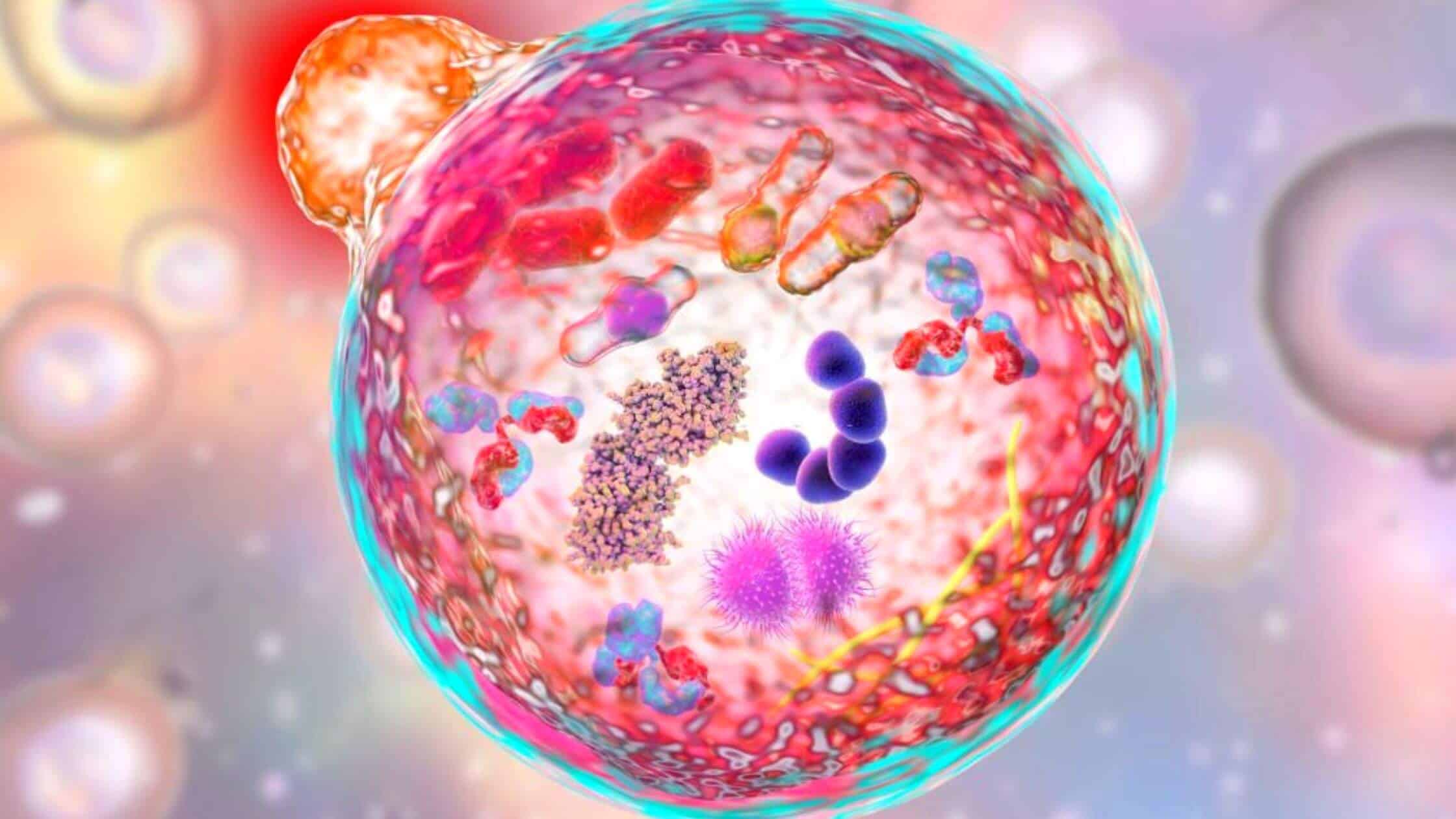Damaged Lysosomes Identified Through Protein Complexes: Study
Teresa Breaux | Last Updated : September 21, 2022A research team from Osaka University, Japan, has come up with their most recent findings on the degradation of cellular components. The report suggests how molecular tags can disclose the selection and the marking of damaged lysosomes for their breakdown.
The details of the research were published in Cell Reports, which explained the specific process of lysophagy, a form of autophagy, by which the damaged lysosomes are cleared out of the body.
A Molecular Analysis Identifies Damaged Lysosomes Through A Protein Complex
Evaluating the study, its findings can be considered critical insights into the molecular mechanisms, which is an important part of lysophagy. Moreover, the experts have suggested its possibility in combating several diseases.

The lead author of the research, Maho Hamasaki has disclosed that he and his team made use of molecular techniques to demolish the expression of proteins. This leads to identifying the role of CUL4A, DDB1, and WDFY1 proteins in composing a complex that addresses lysosomal damage.
A lysosome is described as an acidic intracellular organelle responsible for the degradation process in the body, targeting several cellular components. The self-degradation process of the cells is actually called autophagy. But the body needs a large-scale degradation system to obtain enzymatic breakdown, by which lysosomes or the organelles in the cell’s cytosol are targeted.
More From Powdersville Post:
🔵To Avoid Parkinson’s Disease Energy Of A Cell Should Be Recycled
🔵To Hold-On Cancer Cells Consume Themselves
Earlier, studies have shown that the presence of toxins, lipids, cholesterols, urate crystals, etc are responsible to damage lysosomes, which results in making them dysfunctional. However with lysophage, this crisis is addressed to prevent further complexities it can bring including disease formation, oxidative stress, free radical attacks, and inflammation.
Although previous studies could clarify these, the current report brings initiative to understand the mechanisms behind the cells in identifying and targeting the damaged lysosomes for the degradation purpose.
For this particular study, the researchers have used polystyrene beads to recreate endosomal damage, allowing them to get ubiquitinated. The researchers also used the method of mass spectrometry to isolate these beads through centrifugation. With this, they have recognized 123 proteins that are responsible for the process.
Hirofumi Teranishi, one of the prominent scientists involved in the study has stated that the initial findings itself hinted at the link between lysosomes and SCFFBXO27 (a particular enzyme) to induce the degradation of lysosomes. This tagging process is known as polyubiquitination.
Teranishi also elaborated that the SCFFBXO27 expression is only to be found in the brain as well as the muscle tissues. So the research team had to utilize another ubiquitous enzyme.
The protein complex identified through this study acts only while lysophagy so that it can facilitate the involvement of more ubiquitin molecules in the process. However, the WDFY1 protein is solely responsible for identifying lysosome damage.
The research team also targeted to identify which part of the lysosome is recognized by this specific protein complex. For this, the research team had to assess a significant number of lysosomal proteins and LAMP2 has been found as ubiquitinated by the CUL4A complex. In addition to this, the report also suggested LAMP2’s crucial role in initiating the lysophagy process along with WDFY1.
Considering the further possibility of their findings, the researchers are also on their track for future plans in getting more clarity in the recognition of LAMP2 by the CUL4A complex.
References:
🔵National Library Of Medicine (n.d) Signals for the lysosome: a control center for cellular clearance and energy metabolism (Available on):https://www.ncbi.nlm.nih.gov/pmc/articles/PMC4387238/
🔵Science Direct (n.d) Repair or Lysophagy: Dealing with Damaged Lysosomes (Available on):https://www.sciencedirect.com/science/article/abs/pii/S0022283619305194
Teresa Breaux is a renowned health practitioner who serves as a social worker. She expertized in treating eating disorders and focuses mainly on family-based treatments. Apart from working as a health practitioner, she even provides public awareness through her writings and blogs. Her content includes methods by which you can make delicious and healthy recipes. She is so passionate about writing, especially on issues with eating habits and the importance of eating healthy. If you are someone who loves healthy tips to make your life better, then you must have run across her blogs. You can visit her website and even follow her on social media platforms like Twitter and Instagram.